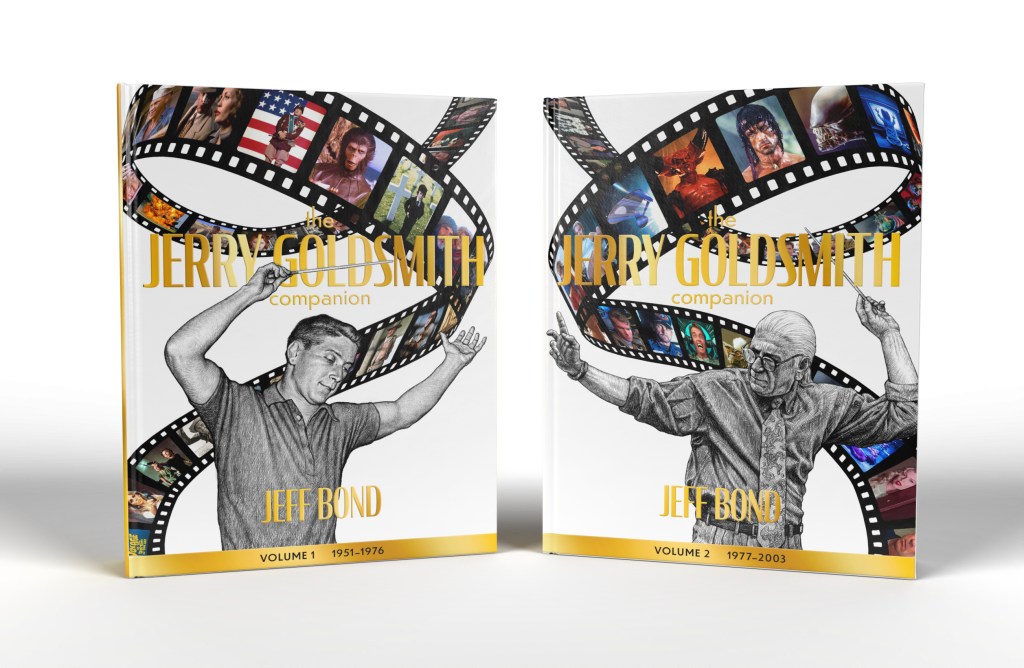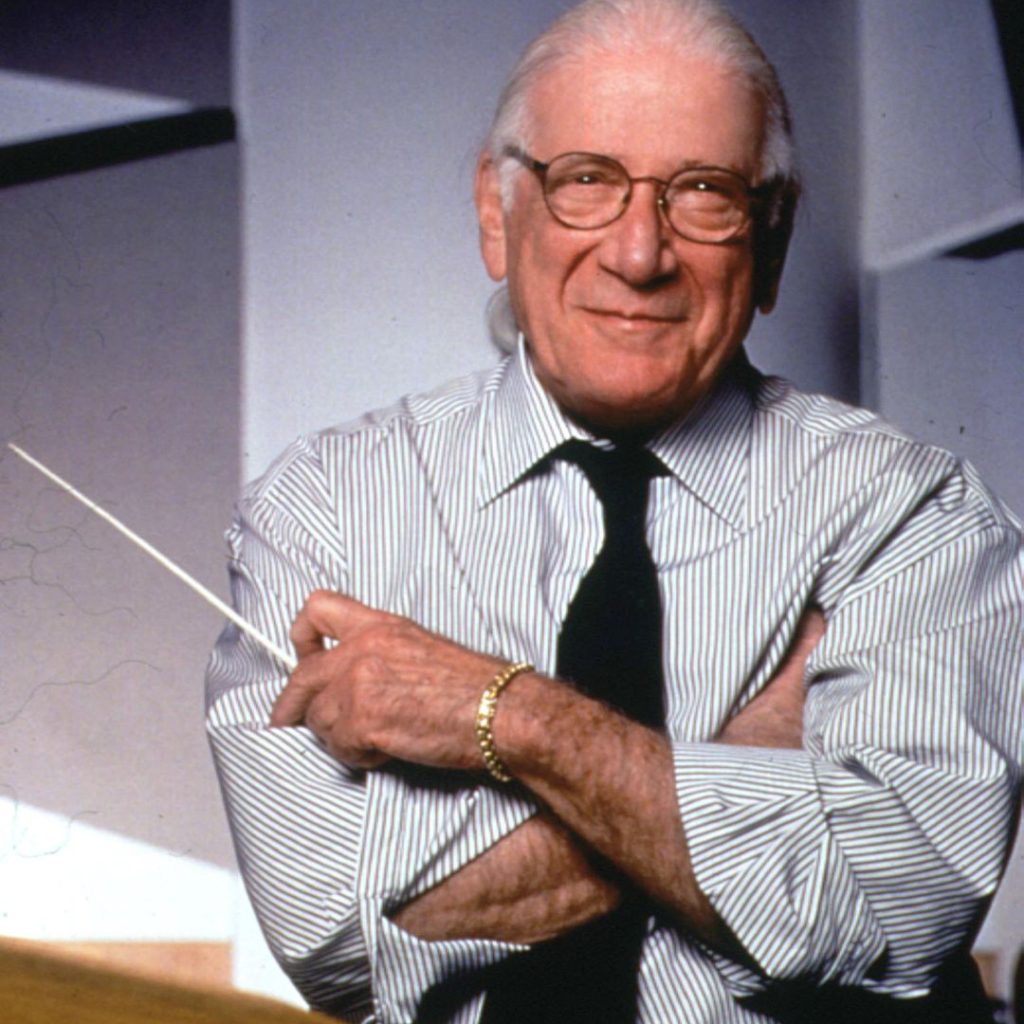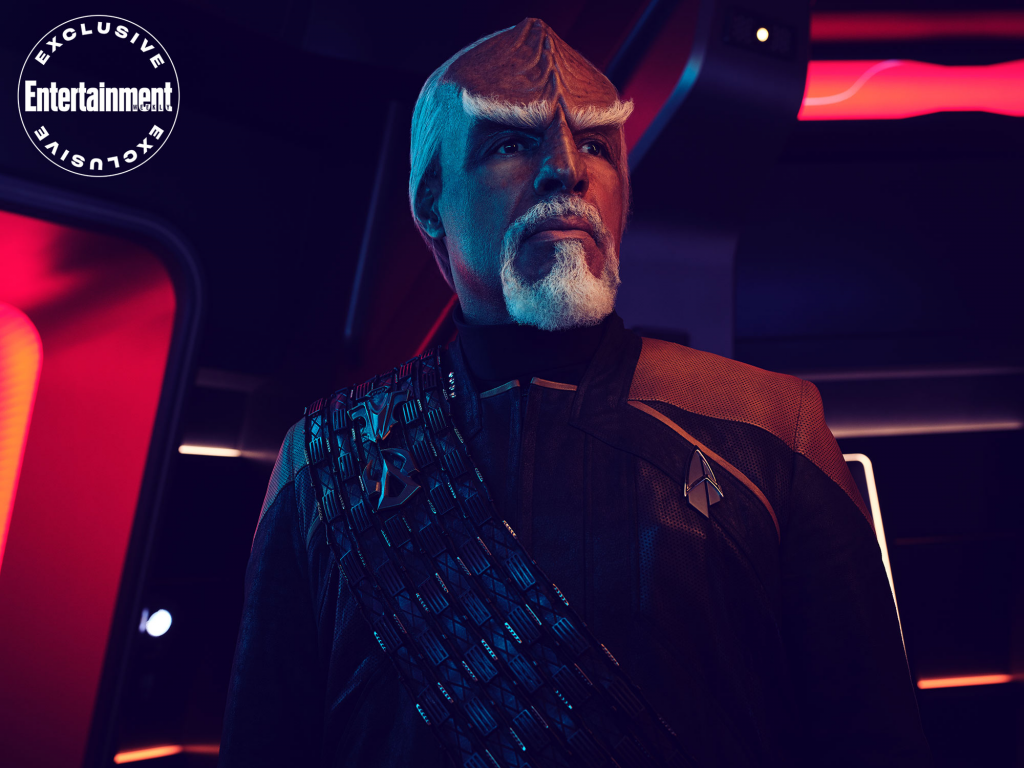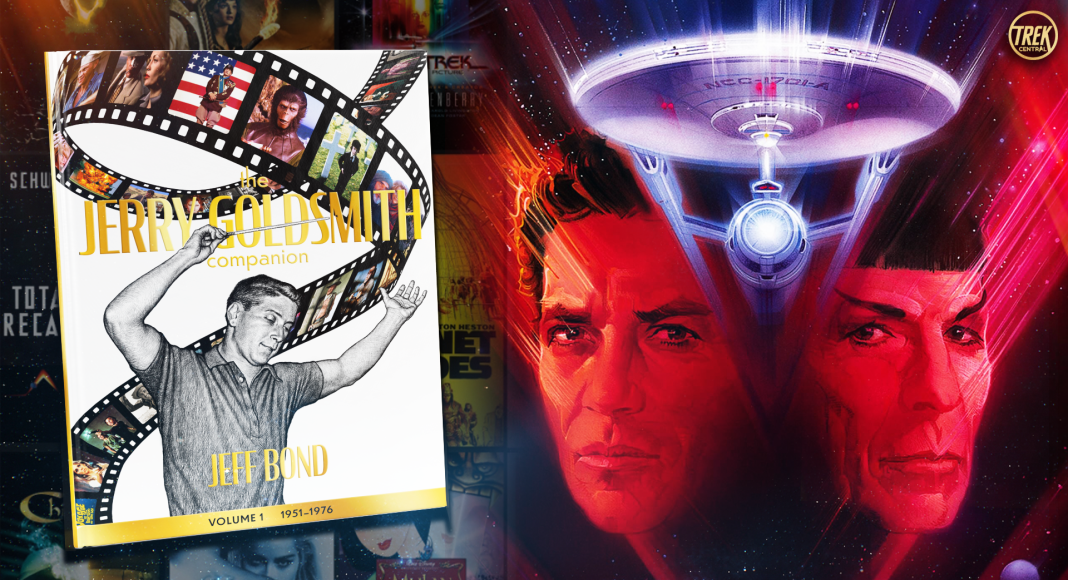We all love Star Trek music. The themes are recognizable by many around the world. Now, a new two-volume biography chronicles the life and work of legendary composer Jerry Goldsmith. He played a key part in defining the musical voice of Star Trek as a franchise. Goldsmith composed the music for five Star Trek feature films and the theme for Star Trek: The Next Generation and Star Trek: Voyager. Goldsmith’s career saw him win five Emmy Awards while being nominated for 18 Academy Awards.
Creature Features Publishing is now fundraising on Kickstarter for The Jerry Goldsmith Companion, a two-volume biography of one of the greatest film composers of all time, Jerry Goldsmith (1929–2004). The books are written by Jeff Bond, author of The Music of Star Trek, numerous Star Trek CD liner notes, and (with coauthor Gene Kozicki) Star Trek: The Motion Picture—Inside the Art & Visual Effects.
Trek Central is pleased to present this exclusive excerpt from the book about Goldsmith’s acclaimed score to Star Trek V: The Final Frontier, which saw the composer’s highly anticipated (and well-received) return to the franchise ten years after his seminal debut.

Exclusive Excerpt – Star Trek V: The Final Frontier
Just as Star Trek V differs from Star Trek: The Motion Picture in tone and execution, Jerry Goldsmith, who scored Star Trek V, was not quite the same composer who had earned an Oscar nomination for the 1979 film. Goldsmith very much saw the sequel score as a continuation. Such as, he revisited both his 1979 march theme and Klingon music. But The Motion Picture score’s avant-garde effects and experimentation had long been left behind for a more romantic approach, with the vestiges of Goldsmith’s impressionistic fantasy scores of the mid-’80s appearing in the margins.
Goldsmith’s decision to revisit his The Motion Picture march was natural—but there was one factor he hadn’t anticipated. With the popularity of The Next Generation on television, Goldsmith’s march theme was now far more associated with the new television series than it was with the movies, to the extent that some accused Goldsmith of ripping off the Next Generation theme, unaware that it was the TV show that had borrowed Goldsmith’s music and not vice versa.
With the movie opening on Shatner’s James T. Kirk climbing the El Capitan cliff face in Yosemite National Park, Goldsmith was able to write a new Americana theme very much in the vein of his outdoor, outside- the-dome music from Logan’s Run, providing a wonderful grandeur to the sequence’s iconic scenery and then adapting the same material to underscore the friendship between Kirk, Spock, and McCoy in a subsequent scene around a campfire in the park—something that oddly had never been addressed musically throughout the series.
Jerry Goldsmith On Crafting Star Trek V’s Score
“The idea is not to mimic what is on the screen, but to get the pulse beating faster or the tears coming, or whatever the emotion is,” Goldsmith said of his work on the film in an interview by Shatner’s daughter, Lisabeth, in her book on the making of the film. “I think the interesting problem in Star Trek is that you’re dealing with space, which is infinite and immense, and yet within that, the characters maintain an intimacy. I wrote a new theme in the campfire scene that opens the picture. “
“We start with the Star Trek theme. Then we go into the whole Yosemite scene, which is expansive, beautiful, and broad. It gets bigger and bigger and then changes. Later on in the campfire scene, Kirk says something about dying alone, and I used that theme to tie it all together. That one theme starts in a big, broad way and becomes something tranquil and intimate.”
Perhaps Goldsmith’s most startling accomplishment in the score is building up anticipation for Kirk, Spock, and McCoy heading down to the Sha-ka-ree planet to meet God. After three-quarters of a film whose action, visual effects, and dramatic fireworks prove distinctly underwhelming, Goldsmith’s music (which begins as Kirk urges Spock and McCoy to join him in travelling down to the planet, noting that “God is a busy man . . .”), giving an epically heavy, basso profundo sound by tubas, presents a four-note, repeated fanfare and variations that almost convinces the viewer they actually are on the verge of meeting Jehovah.
The Challenge of Science
Goldsmith recognized the challenge as the movie ventured into territory where no science-fiction film had dared. “You’re dealing with a very touchy subject to begin with, and you don’t want to give it away until the very last second,” he told Lisabeth Shatner. Ingeniously, Goldsmith’s God motif plays throughout the movie as an action and suspense motive, foreshadowing Sybok’s motivations and seemingly playing his obsession with finding God as a dark force pushing the character into violence and confrontation.
After its imposing, mythic incarnation during the journey by shuttlecraft down to the Sha-ka-ree planet surface, the God motif retreats into its dark, pulsing suspense guise as “God” briefly reveals himself (in the form of character actor George Murdock, whose suggestion that he board the Enterprise to journey away from Sha-ka-ree prompts Kirk’s classic line, “Excuse me . . . what does God need with a starship?”).
When the entity turns out to be fraudulent, violent, and angry, Goldsmith’s God motif becomes a hammering action motif for low brass, pounding away as Kirk flees from the entity on the planet surface. Despite its seemingly profound uses, Goldsmith saw the motif as utilitarian and returned to it in his later Star Trek movie scores.

The Famous Klingon Theme
Goldsmith adds a bird-like clarion call to enhance his Klingon theme, and for other parts of the score, he returns to medieval instruments, this time a sackbut, but an ancestor of the modern trombone. But to maintain control over the instrument’s finicky tuning, Goldsmith samples a sackbut and expresses the sound electronically. “That idea, that was one of the first cues I wrote, and I thought I would use that idea all through the picture. I didn’t use it constantly, but it appeared several times during the picture. That was an example of my using a sampled acoustic sound. “
“The samples I used were made in London by some players I know, and I’ve used them on live dates. The intonation on medieval instruments is very unreliable, especially if you want to use the entire chromatic scale—forget it! But, if you get good, clean samples—which these all were—then you can use instruments like the serpent, the sackbut, and the crumhorn. They are impossible to play, believe me; I’ve used them and I’ve tried. But now, if you have good samples of them, you can do anything you want with them. The intonation is perfect, you’ve got all the chromatics you want, and you can play chords with them. That’s one instance where I think the sampler’s terrific.”

Conclusion
If you’re interested in more about Jerry Goldsmith, check out The Jerry Goldsmith Companion, as it features more about Goldsmith’s work on Star Trek: The Motion Picture as well as Star Trek V: The Final Frontier, Star Trek: First Contact, Star Trek: Insurrection, Star Trek: Nemesis, and the theme to Star Trek: Voyager. The expected release is around November 2023. You can reserve your copy. To do so, visit the Kickstarter page.
More From Trek Central
📰 – Star Trek: Strange New Worlds Season 2 Episode Titles & Details
🔥 – Seven of Nine – From Borg to Badass
🔍️ – Star Trek: Resurgence – Writers Interview
Join the Star Trek conversation via our social media platforms:
- Facebook – https://www.facebook.com/TrekCentral
- Instagram – https://instagram.com/TrekCentral
- Twitter – https://twitter.com/TheTrekCentral
- YouTube – https://youtube.com/TheTrekCentral
- Mastodon – https://mastodon.social/@TrekCentral@universeodon.com
- Discord – https://discord.gg/fF2heMbfW8
- Twitch – https://Twitch.tv/TrekCentral







